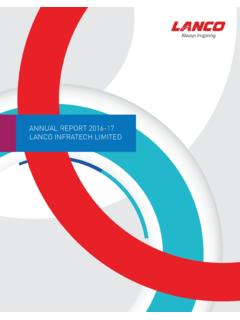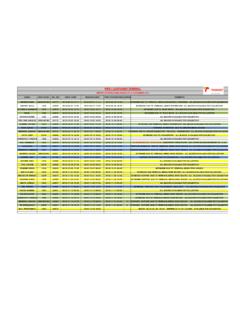Transcription of 100 KWp Solar Power Plant Technical Proposal
1 2014 Switch Solar Babu Ilangkannan [100 KWp Solar Power Plant Technical Proposal ] Nazareth Foods Pvt Ltd Chennai, Tamil Nadu. 100KW Solar Power Plant Technical Proposal Switch Solar | Confidential. 1 Contents Technical Proposal ..1 Section A - Bill of Section B - Section C - Single Line Solar Why System Configuration ..7 PV Module ..7 Cables ..8 LV ACB Earthing and Lightning Arrestor ..10 Solar PV Solar 100KW Solar Power Plant Technical Proposal Switch Solar | Confidential.
2 2 Technical Proposal Section A Bill Of Quantities DESCRIPTION UNIT QTY Make 1 Solar MODULES - 250Wp Crystalline Modules No's 400 Lanco, Emmvee or equivalent 2 20KW. String inverter No's 5 Refusol, Donfoss or equivalent 3 Module mounting structure(MS Hot Dip Galvanized with appropriate analysis for Load/Wind speed) Set MNRE/Indian Standard complied 4 Electrical Accessories including cables & conduit Set MNRE/Indian Electrical Standard complied 5 Remote Monitoring System No's 1 Part of Inverter accessory 6 Mounting structure earthing points POINTS Set As per CEIG Rules 7 Lightning Arrestor and earthing kits (If Required) POINTS 1 As per CEIG recommendation 8 LT Panel (If Required) Set 1 ABB/Siemens or equivalent 9 Civil Works(Pile foundations, equipment foundations)
3 M15/M20 with structural strength assessment 10 Installation and Commissioning Switch Solar Scope 100KW Solar Power Plant Technical Proposal Switch Solar | Confidential. 3 100KW Solar Power Plant Technical Proposal Switch Solar | Confidential. 4 100KW Solar Power Plant Technical Proposal Switch Solar | Confidential. 5 Introduction This is an initial Proposal and all information is subject to change based on site requirements and detailed Engineering document.
4 Please contact us for any more information and clarifications. We look forward for your long lasting Business relationship and we are committed to deliv er high quality service & standards to our clients. Solar Photovoltai c Solar Photovoltaic (PV) is a method of converting Solar irradiation in to direct current electricity using semiconductor that exhibit the Photovoltaic Effect. Photovoltaic Power generation employs Solar panels composed of a number of Solar cell containing a photovoltaic material. Materials presently used for photovoltaic include monocrystalline silic on, poly crystalline silicon, amorphous silicon, Cadmium Telluride (CdTe) and copper indium gallium selenite/sulfide (CIGS) Due to the growing demand for renewable energy sources, the manufacturing of Solar cells and photovoltaic system has advanced considerably in recent years.
5 Solar photovoltaic is growing rapidly, albeit from a small base, to a total global capacity of 69GW at the end of 2011. The total Power output of the world s PV capacity run over a calendar year is equal to some 80 billi on kWh of electricity. This is sufficient to cover the annual Power supply needs of over 20 million households in the world. Driven by advances in technology and increases in manufacturing scale and sophistication, the cost of photovoltaic has declined steadily since the first Solar cells were manufactured and the leveled cost of electricity (LCOE) from PV is competitive with conventional electricity sources in an expanding lis t of geographic regions.
6 Net Metering and financial incentives, such as preferential feed-in tariffs for Solar -generated electricity, have supported Solar PV installations in many countries. With current technology, photovoltaic recoup the energy needed to manufacture them in 1 to 4 years. Why Solar ? While a majority of the world's current electricity supply is generated from fossil fuels such as coal, oil and natural gas, these traditional energy sources face a number of challenges including rising prices, securit y concerns over dependence on imports from a limited number of countries which have significant fossil fuel supplies, and growing environmental concerns over the climate change risks associated with Power generation using fossil fuels.
7 As a result of these and other challenges facing traditional energy sources, governments, businesses and consumers are increasingly supporting the development of alternative energy sources and new technologies for electricity generation. Renewable energy sources such as Solar , biomass, geothermal, hydroelectric and wind Power generation have emerged as potential alternatives 100KW Solar Power Plant Technical Proposal Switch Solar | Confidential. 6 which address some of these concerns. As opposed to fossil fuels, which draw on finite resources that may eventually become too expensive to retrieve, renewable energy sources are generally unlimited in availability.
8 Solar Power generation has emerged as one of the most rapidly growing renewable sources of electricity. Solar Power generation has several advantages over other forms of electricity generation: Reduced Dependence on Fossil Fuels. Solar energy production does not require fossil fuels and is therefore less dependent on this limited and expensive natural resource Environmental Advantages. Solar Power production generates electricity with a limited impact on the environment as compared to other forms of electricity production. Matching Peak Time Output with Peak Time Demand. Solar energy can effectively supplement electricity supply from an electricity transmission grid, such as when electricity demand peaks in the summer Modularity and Scalability.
9 As the size and generating capacity of a Solar system are a function of the number of Solar modules installed, applic ations of Solar technology are readily scalable and versatile. Government Incentives. A growing number of countries have establis hed incentive programs for the development of Solar and other renewable energy sources, such as (i) net metering laws that allow on-grid end users to sell electricity back to the grid at retail prices, (ii) direct subsidies to end users (iii) low interest loans for financing Solar Power systems and tax incentives; and (iv) government standards that mandate minimum usage levels of renewable energy sources. Solar Purchase Obligation (SPO) Tamil Nadu will actively promote the Solar energy sector by prescribing a certain percentage of electricity consumption through Solar energy as mandatory.
10 This will be progressively increased. The Government will mandate 6% SPO starting from January 2014 for the following category of consumers: This category will cover all HT consumers including: Special Economic Zones (SEZs) Industries guaranteed with 24/7 Power supply IT Parks, Telecom Towers All Colleges & Residential Schools Buildings with a built up area of 20,000 sq. m. or more 100KW Solar Power Plant Technical Proposal Switch Solar | Confidential. 7 System C onfi guration: Basic components for grid connected system Solar PV module DC cable Structures Inverters/PCU Earthing and Lightning arrestor PV Module A Solar panel (also Solar module, photovoltaic module or photovoltaic panel) is a, connected assembly of Solar cell.













